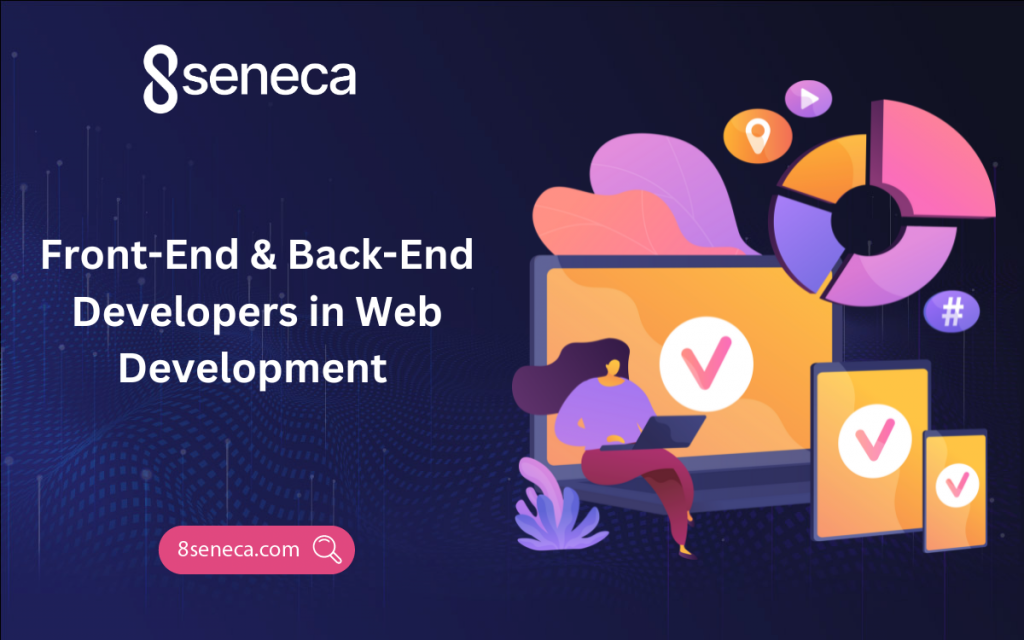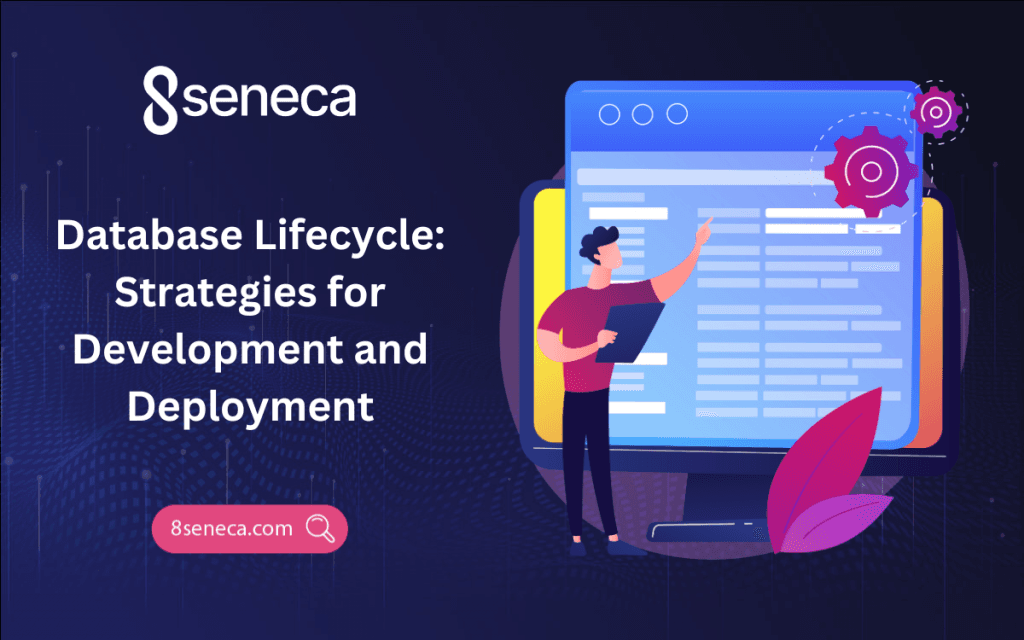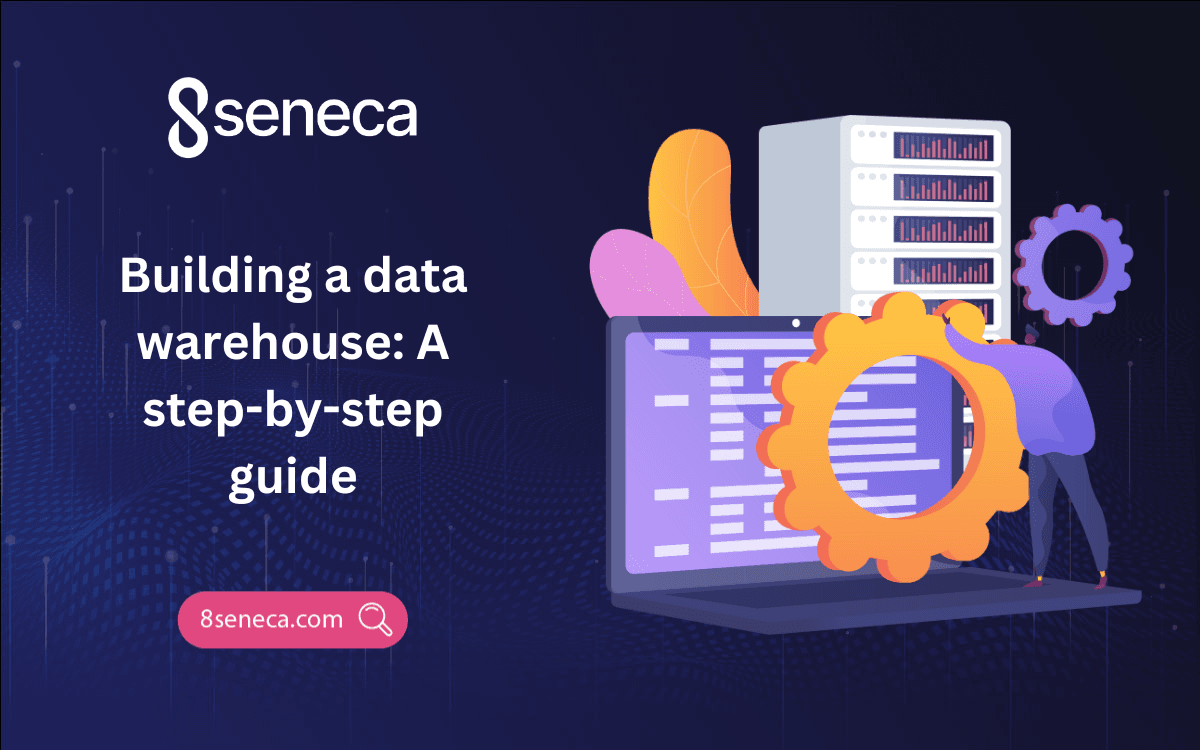Front-End and Back-End Developers in Web Development
Discover the differences between front-end, back-end, and full-stack web development, and explore the essential skills for each

Have you ever noticed how smoothly websites like Apple.com run whenever you click, scroll, or navigate? If you haven’t thought about it, that seamless experience is thanks to the hard work of web developers in web development. These developers ensure websites function efficiently and without glitches.
There are two main types of developers in web development: front-end developers and back-end developers. Additionally, there is a third type called full-stack developers, who work across both areas of web development. In this blog, we will walk you through the role of each type of developer, the skills required, and how websites are brought to life through the process of web development.
1. What is Front-End Developer?
A front-end developer is a software developer who designs everything you see on websites or apps. Whether you’re browsing an app or visiting a website, every element you interact with—such as the layout, colors, and buttons—is the result of a front-end developer’s work. Simply put, their job is to ensure the website or app looks appealing, functions properly, and runs smoothly, which is a crucial part of web development.
A front-end developer’s responsibilities in web development usually include several key areas:
- Designing the User Interface (UI): They create the webpage based on the design provided. Their role is to make sure the site functions as intended.
- Ensuring Consistent Appearance: Front-end developers ensure that the website looks good and operates smoothly on all devices, whether it’s a smartphone or a desktop computer.
- Optimizing Speed: They work to maintain fast web performance, even if the site contains many images or videos.
- Handling User Interaction: Front-end developers add functionality such as dropdown menus, image sliders, forms, and interactive maps. Anything users can click, scroll, or type is their responsibility.
Some common tools front-end developers use include:
- HTML (Hypertext Markup Language)
- CSS (Cascading Style Sheets)
- JavaScript
In addition to these tools, they also need soft skills like problem-solving to tackle challenges that arise in web development.
2. What is Back-End Developer?
Unlike front-end developers, a back-end developer works on the parts of the website that users don’t see. They ensure that everything runs smoothly behind the scenes, which is an essential part of web development. Back-end developers focus on processing data and making sure the website functions correctly.
Their key responsibilities include:
- Building and Maintaining Websites: They use various tools and coding languages to build websites that are easy to navigate and use.
- Writing High-Quality Code: Back-end developers write clean, organized code, which makes it easy to update or fix the website in the future.
- Testing for Quality: They ensure that websites work well across different devices and platforms.
- Checking Efficiency and Speed: Back-end developers assess how fast the website loads and how well it handles multiple users at the same time.
- Troubleshooting and Debugging: If there’s an issue, they figure out what’s wrong and work with the team to solve the problem.
Some skills a back-end developer needs in web development include:
- Programming languages
- Databases
- APIs
- Server Management
- Version Control
- Testing
- Problem-solving
3. Full-Stack Developer
Many web development enthusiasts have no idea that full-stack development exists. While front-end and back-end developers focus on their specific areas, full-stack developers handle both, making them versatile professionals in web development. This means they need a broad set of skills to work on both sides. In other words, they need front-end skills like HTML, CSS, JavaScript, and responsive design, along with back-end skills such as programming languages and database management.
Additionally, full-stack developers must be familiar with various aspects of, including:
- APIs (Application Programming Interfaces)
- Server Management
- Version Control
- Security
- Problem Solving
- Testing
- Frameworks and Libraries
4. How to Choose a Path in Web Development
When many people say they want to pursue web development as a career, they don’t always realize that this field has several branches. As mentioned earlier, there are front-end, back-end, and full-stack web development paths. If you enjoy designing and making websites visually appealing, front-end development might be for you. However, if you are more interested in databases and logic, back-end development may suit you better. On the other hand, if you believe you can handle both, full-stack development could be your ideal choice.
Regardless of the path you choose, it’s essential to be fully prepared for the work ahead in web development. Make sure you have a strong grasp of the fundamental knowledge and skills needed to succeed in your role.
Conclusion
Front-end developers focus on the visual and interactive aspects of websites, while back-end developers handle the behind-the-scenes functions. Full-stack developers work across both areas of web development. We encourage you to explore each type of development and choose the one that excites you the most. Remember, web development is an exciting world where you can create something new every day.
Related articles

Dec 09, 2024
Read more
What is Cross-platform Mobile Development?
Learn what cross-platform mobile development is, its benefits, challenges, and popular frameworks like Flutter, React Native, and Xamarin.

Dec 06, 2024
Read more
The Leadership Factor: Why Strong Leaders Make Successful Projects
Discover how effective leadership drives project success with strategies to inspire teams, tackle challenges, and achieve goals.

Nov 14, 2024
Read more
Essential Skills for Database Developers
Discover what database developers do, the skills needed, and why upskilling in database management is essential in today’s data-driven world.

Oct 29, 2024
Read more
Database Lifecycle: Strategies for Development and Deployment
Learn the key stages of the database lifecycle—Planning, Analysis, Design, Implementation, Testing, Deployment, and Maintenance

Sep 30, 2024
Read more
Building a Data Warehouse: A step-by-step guide
Learn the key components, best practices, challenges of building and maintaining a data warehouse, and how it can drive better business.

Sep 17, 2024
Read more
How to Create Top B2B SaaS Product and Features Pages
Explore key elements and examples of B2B SaaS product pages to boost conversions and showcase your product's value.
